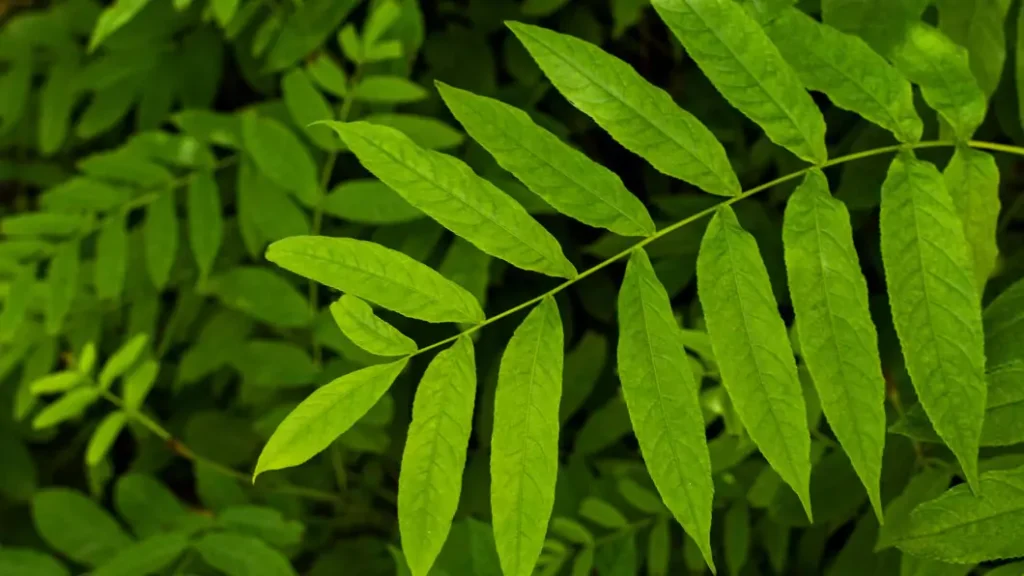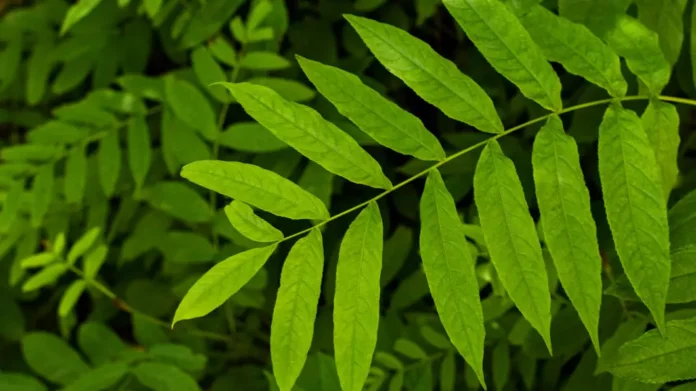Introduction: Why Indoor Plants are Essential for Air Quality Improvement
Indoor air quality is a growing concern in today’s world, as many people spend the majority of their time indoors. Surprisingly, indoor air can be even more polluted than outdoor air, due to factors such as poor ventilation, off-gassing from furniture and building materials, and the accumulation of dust and allergens. This can lead to a range of health issues, including respiratory problems, allergies, and even cognitive impairment.
One solution to this problem is the use of indoor plants. Plants have the amazing ability to purify the air through a process called phytoremediation. This process involves plants absorbing harmful toxins from the air and converting them into harmless substances. By introducing indoor plants into your living space, you can significantly improve the air quality and create a healthier environment for yourself and your family.

Benefits of Indoor Plants: From Oxygen Production to Stress Reduction
One of the most well-known benefits of indoor plants is their ability to produce oxygen. Through photosynthesis, plants take in carbon dioxide and release oxygen into the air. This can help to increase oxygen levels in your home, making it easier to breathe and improving overall respiratory health.
In addition to producing oxygen, indoor plants also have the ability to remove toxins from the air. They do this by absorbing harmful chemicals such as formaldehyde, benzene, and trichloroethylene through their leaves and roots. These toxins are commonly found in household products such as cleaning agents, paints, and furniture. By having indoor plants in your home, you can effectively reduce the levels of these toxins and create a healthier living environment.
Another benefit of indoor plants is their ability to reduce stress and improve mental health. Studies have shown that being around plants can have a calming effect on the mind and body, reducing feelings of anxiety and promoting relaxation. In addition, caring for plants can provide a sense of purpose and fulfillment, which can contribute to overall well-being.
Indoor plants also have the ability to improve humidity levels in your home. They release moisture into the air through a process called transpiration, which can help to combat dryness and prevent respiratory problems. Furthermore, plants can act as natural sound absorbers, reducing noise levels and creating a more peaceful and serene environment.
Top-Rated Indoor Plants for Air Purification: A Comprehensive List
There are many indoor plants that are known for their air-purifying properties. Here is a comprehensive list of some of the most effective plants for air purification:
1. Spider Plant: Spider plants are excellent at removing formaldehyde from the air. They are also easy to care for and can thrive in a variety of lighting conditions.
2. Peace Lily: Peace lilies are known for their ability to remove toxins such as benzene and trichloroethylene from the air. They also have beautiful white flowers that can add a touch of elegance to any space.
3. Dracaena: Dracaenas are stylish plants that can remove toxins such as formaldehyde, benzene, and trichloroethylene from the air. They come in a variety of shapes and sizes, making them a versatile choice for any home.
4. Snake Plant: Snake plants are hardy plants that can thrive in low-light conditions. They are excellent at removing toxins such as formaldehyde and benzene from the air, making them a great choice for bedrooms or offices.
5. Boston Fern: Boston ferns are beautiful plants that can add moisture to dry air. They are also effective at removing toxins such as formaldehyde and xylene from the air.
6. English Ivy: English ivy is a versatile plant that can remove toxins such as benzene, formaldehyde, and trichloroethylene from the air. It can be grown as a hanging plant or trained to climb up walls or trellises.
Spider Plant: The Ultimate Air-Cleaning Machine
The spider plant, also known as Chlorophytum comosum, is one of the most popular indoor plants for air purification. It is highly effective at removing formaldehyde from the air, which is commonly found in household products such as cleaning agents, paints, and furniture.
Spider plants have long, arching leaves that are green with white stripes. They are easy to care for and can thrive in a variety of lighting conditions, making them a great choice for any home. They can be grown in pots or hanging baskets and can even be propagated by planting the small “spiderettes” that grow from the main plant.
To care for a spider plant, it is important to place it in a well-draining potting mix and water it regularly. Spider plants prefer bright, indirect light but can tolerate lower light conditions. They should be watered when the top inch of soil feels dry to the touch. Spider plants also benefit from occasional misting to increase humidity levels.
Peace Lily: A Low-Maintenance Plant with High Air-Purifying Properties
The peace lily, also known as Spathiphyllum, is another excellent choice for improving indoor air quality. It is particularly effective at removing toxins such as benzene and trichloroethylene from the air.
Peace lilies have dark green leaves and beautiful white flowers that can add a touch of elegance to any space. They are relatively low-maintenance plants and can thrive in low-light conditions. However, they do require regular watering and should be placed in a well-draining potting mix.
To care for a peace lily, it is important to keep the soil evenly moist but not soggy. Peace lilies will wilt when they need water but will quickly recover once watered. They prefer bright, indirect light but can tolerate lower light conditions. Peace lilies also benefit from occasional misting to increase humidity levels.
Dracaena: A Stylish Plant that Improves Air Quality
Dracaenas are stylish plants that can improve indoor air quality by removing toxins such as formaldehyde, benzene, and trichloroethylene. They come in a variety of shapes and sizes, making them a versatile choice for any home.
Dracaenas have long, sword-shaped leaves that can be green, yellow, or variegated. They are relatively low-maintenance plants and can thrive in a variety of lighting conditions. However, they do require regular watering and should be placed in a well-draining potting mix.
To care for a dracaena, it is important to water it when the top inch of soil feels dry to the touch. Dracaenas prefer bright, indirect light but can tolerate lower light conditions. They also benefit from occasional misting to increase humidity levels.
Snake Plant: A Hardy Plant that Thrives in Low-Light Conditions
Snake plants, also known as Sansevieria, are hardy plants that can thrive in low-light conditions. They are excellent at removing toxins such as formaldehyde and benzene from the air, making them a great choice for bedrooms or offices.
Snake plants have long, upright leaves that are green with yellow or white stripes. They are relatively low-maintenance plants and can tolerate neglect. Snake plants prefer well-draining soil and should be watered sparingly. They can also tolerate low humidity levels and do not require misting.
To care for a snake plant, it is important to place it in a well-draining potting mix and water it sparingly. Snake plants prefer bright, indirect light but can tolerate lower light conditions. They should be watered when the soil feels dry to the touch.
Boston Fern: A Beautiful Plant that Adds Moisture to Dry Air
Boston ferns are beautiful plants that can add moisture to dry air. They are also effective at removing toxins such as formaldehyde and xylene from the air.
Boston ferns have delicate, feathery fronds that can add a touch of elegance to any space. They prefer bright, indirect light and should be placed in a well-draining potting mix. Boston ferns require regular watering and should be kept evenly moist.
To care for a Boston fern, it is important to water it when the top inch of soil feels dry to the touch. Boston ferns prefer bright, indirect light but can tolerate lower light conditions. They also benefit from occasional misting to increase humidity levels.
English Ivy: A Versatile Plant that Removes Toxins from the Air
English ivy is a versatile plant that can remove toxins such as benzene, formaldehyde, and trichloroethylene from the air. It can be grown as a hanging plant or trained to climb up walls or trellises.
English ivy has dark green leaves that are variegated with white or yellow. It prefers bright, indirect light and should be placed in a well-draining potting mix. English ivy requires regular watering and should be kept evenly moist.
To care for an English ivy, it is important to water it when the top inch of soil feels dry to the touch. English ivy prefers bright, indirect light but can tolerate lower light conditions. It also benefits from occasional misting to increase humidity levels.
Conclusion: How Indoor Plants can Transform Your Home and Improve Your Health
In conclusion, indoor plants are essential for improving air quality and creating a healthier living environment. They have the ability to produce oxygen, remove toxins from the air, reduce stress, improve humidity levels, and even absorb sound. By introducing indoor plants into your home, you can significantly improve the air quality and create a more peaceful and serene environment.
Some of the top-rated indoor plants for air purification include the spider plant, peace lily, dracaena, snake plant, Boston fern, and English ivy. These plants are highly effective at removing toxins such as formaldehyde, benzene, and trichloroethylene from the air. They are also relatively low-maintenance and can thrive in a variety of lighting conditions.
So why not transform your home and improve your health by adding some indoor plants? Not only will they purify the air, but they will also add beauty and tranquility to your living space. Take the time to research which plants are best suited for your home and start reaping the benefits of indoor plants today.



